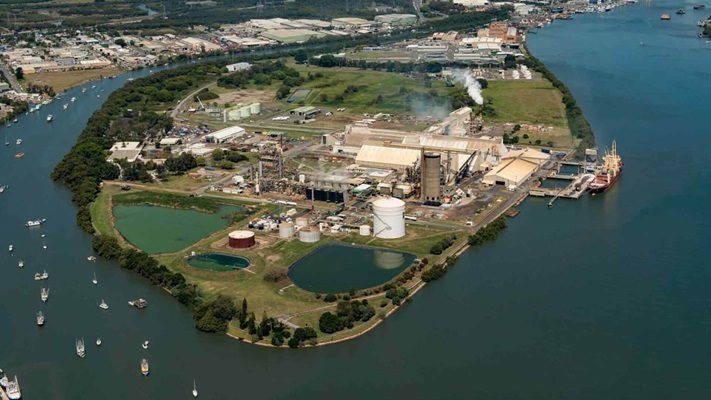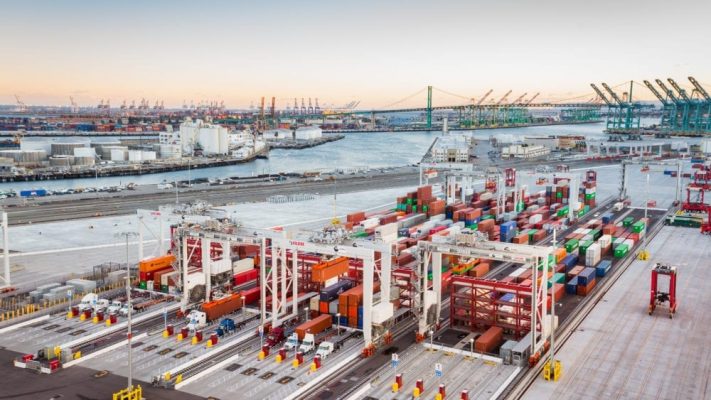TAC Sponsor Spotlight Article — Hatch
The global ports and terminals director for one of the world’s leading engineering companies emphasizes the urgent need for ports and terminals worldwide to modernize in response to climate change, increasing competition, and the rise of digitization.
Andrew Catto, Global Director for Ports and Terminals at Hatch, a renowned multidisciplinary leader in engineering, operational, and development projects across metals, energy, and infrastructure industries, forecasts a future where net-zero initiatives, densification, digitization, and climate resilience will be the defining forces shaping the global port sector.
Modernization efforts will be integral to the global drive towards net-zero and the development of green-powered grids, significantly impacting how facilities and transport systems consume and manage energy. “It’s no mean feat, but without that foundation, efforts to decarbonize and electrify will fall short,” says Catto.

Ports worldwide contribute significantly to their respective economies, supporting millions of jobs and handling the majority of international trade. Catto warns that pressure is mounting globally as the demand for critical minerals like lithium, nickel, and cobalt accelerates. Forecasts predict substantial growth in copper consumption and a dramatic increase in global demand for nickel by 2040 as the world races to decarbonize and electrify to curb climate change. Ironically, these materials are being delivered through supply chains that themselves need to decarbonize to meet demand.
Catto asserts that ports must quickly evolve from bulk commodity hubs into future-ready trade gateways—powered by smarter data use, equipped with modern infrastructure, and designed using climate adaptation strategies—to operate sustainably and minimize supply chain disruptions.
Major global hubs are handling significant trade volumes, driven by various exports and imports. Trade volumes in both containerized and non-containerized freight markets are expected to rise, presenting one of the sector’s biggest opportunities for growth. However, this also drives a desperate need for infrastructure expansion, technology adoption, and net-zero operations at both ports and inland transportation corridors.

Major infrastructure projects around the world are already laying the groundwork for growth. Long-term strategies anticipate that trade volumes will double in the coming decades. This global positioning is crucial to meet the world’s growing appetite for critical minerals, with significant reserves and production capabilities spread across various countries.
Catto highlights the importance of strategic planning and sustainable development to address issues such as:
Ageing infrastructure
- Problem: Many ports have aging infrastructure now approaching the end of its useful life. This can lead to inefficiencies, increased maintenance costs, and safety concerns.
- Solution: Conducting detailed condition assessments to understand the current state of the infrastructure and planning for upgrades or replacements. This includes using modern materials and technologies to extend the life of existing structures and ensure they can handle future demands.
Urban Encroachment
- Problem: As cities expand, urban development often encroaches on port areas, leading to conflicts over land use and limiting port expansion. This can result in congestion and reduced operational efficiency.
- Solution: Implementing strategic urban planning that integrates port operations with urban development. This can include creating buffer zones, optimizing land use within port boundaries, and developing multi-use waterfront areas that serve both port and urban needs.
Sterilization of Key Transport Corridors
- Problem: Key transport corridors, such as roads and railways leading to ports, can become congested or blocked by urban development, reducing the efficiency of cargo movement.
- Solution: Enhancing transport corridors through infrastructure investments, such as building dedicated freight routes, using smart traffic management systems, and developing autonomous and low-emission transport solutions to reduce congestion and improve efficiency.
Improving inland connectivity is crucial for efficient cargo movement from ports to inland destinations. Rail links and inland terminals help decongest port areas and provide a more sustainable and efficient means of transporting goods.
Investing in rail infrastructure, including new rail lines, upgrades to existing ones, and developing intermodal facilities that allow for easy transfer of goods between different modes of transport—to create seamless connections between ports and inland terminals is essential.

Integrating digital solutions to optimize cargo handling and improve the efficiency of rail operations can further enhance connectivity. By addressing these issues through strategic planning and sustainable development, ports can improve their capacity and efficiency, ensuring they remain competitive and capable of handling future trade demands.
“With the right partnerships and forward-thinking strategy, we can create resilient, future-ready ports that drive economic growth and support global sustainability goals,” concludes Catto.
